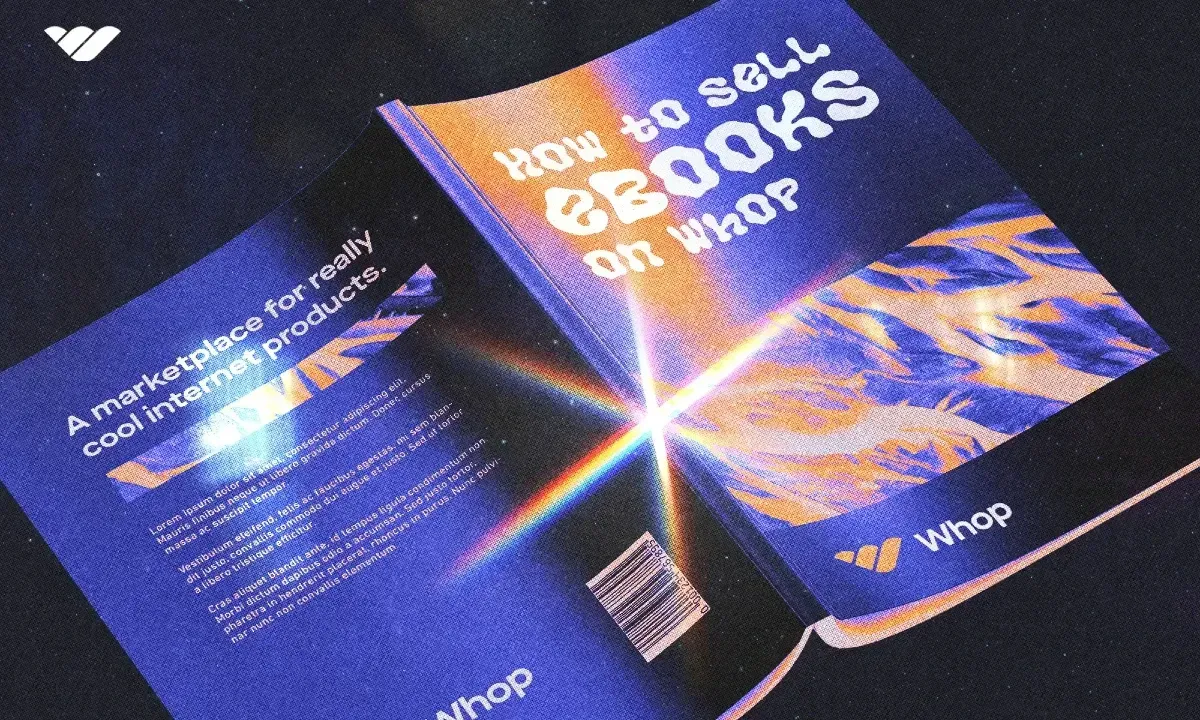With so many different types of ecommerce businesses you could start, the task of choosing one can be overwhelming. However, when armed with a good business idea and an actionable, well-laid-out plan, the odds of success are on your side.
In this guide, you will learn how to start an ecommerce business today in 2024, even if you have no experience, with our easy step-by-step guide. You’ll also learn how to scale it to significant levels of income, the best products you can sell, and how and where to market them.
For now, let’s begin by looking at the different types of ecommerce business models, before launching into how you can start and scale your ecommerce business today.
Different types of Ecommerce Business Models
An ecommerce business is an online storefront that can reach any customer with access to its site via the internet. These stores are created by individuals from diverse backgrounds, ranging from seasoned entrepreneurs to those having their first go at launching a business. If you can sell something online, then you can create an ecommerce store! Although the general concept is the same, there are varying types of business models.
Depending on the product you are selling and how you choose to sell it, your ecommerce business will fall within one of the following models:
B2C
Most ecommerce businesses operate using the business-to-consumer, or B2C business model. This means that customers will browse your store and buy products directly. B2C is the most popular business model because it is the most easily understood by the consumer, and perhaps the most documented in terms of case studies and support for sellers.
D2C
With D2C, a manufacturer sells their own product directly to consumers, usually though social media platforms and mobile apps. While B2C and D2C are similar, with D2C, the product reaches the customer directly, without any middle channels of distribution to seller or product wholesaler.
B2B
If you are selling directly to another business as your primary driver of revenue, you will be operating in a business-to-business or B2B model. Many popular B2B ecommerce business models are not well known to the consumer public, and they require less trendy branding but have more of a need for good relationships with both buyers and suppliers so that they can remain profitable and competitive.
Dropshipping

While this model also falls under D2C, it has a slight difference in the typical fulfillment method as you are acting as an intermediary for another company that is actually selling its product directly to the customer without them knowing. Although it has many risks, namely oversaturation, it is still possible to find success if you choose Dropshipping as a business model.
Print-on-Demand
Similar to dropshipping but applicable to merchandise including clothing, posters, and kitchenware, print-on-demand also fulfills a customer’s order as they come behind the scenes using another company.
Wholesaling
If you are selling a product in bulk, you likely fall in the category of wholesaler. Wholesaling is often done under the B2B model, as customers will more likely than not sell each product individually in order to make a profit.
How to Start an Ecommerce Business in Six Steps👷
With your chosen business model in mind, it is time to take steps toward setting up your ecommerce business. However, as we mentioned earlier, taking that first step can be daunting. That is why we have created this informative guide to direct you through the process, from start to finish.
Let’s begin with setting up your ecommerce business. Here are six steps that you can follow to become an ecommerce business owner whose store will be primed to scale to great heights if they meet a strong market demand.
Step One: Personal Assessment
Since you will be the owner and primary operator of the business at least in the beginning, a sometimes overlooked but incredibly important step is starting with a personal assessment. Ideally, this assessment will include skills, relevant past experience, interest level, and commitment or availability.
Ask yourself a series of questions and give honest answers so that you know whether or not making an ecommerce store is aligned with your personal goals:
- Do you have unique experience or knowledge that you can showcase in a physical or digital product?
- How motivated are you to go through the potentially arduous process of creating and launching an online store?
- How much time do you have to commit to your ecommerce store?
- Do you hope to make a side hustle or a significant full-time living?
- How many people do you want to impact?
- Do you have genuine interest and ability to commit to the whole process of starting and continuing to operate all aspects of an ecommerce store?
While there will be more potential questions you can ask yourself, these questions should be a good start so you can lay the mental base as the crucial initial step for starting your very first ecommerce business.
Need some ideas? Here are 50 online business ideas that you can start in 2024
Step Two: Product and Market Analysis

Now that you’ve gone through a personal assessment, you will likely have a rough idea of the realm that your business may end up in. Unless you have a unique invention, it is highly unlikely that you are the first person to have thought of whatever idea you have. Analyze the competitive landscape and market demand of your chosen product. This can be done with the following methods:
- A Google search for shopping results and blog posts written about a certain product
- Searching through forums like Reddit to see if people are discussing a topic that demands a solution that your product can offer
- Using keyword research tools to determine the volume of interest for related keywords and phrases
- Searching social media for UGC surrounding a topic related to your product
In most cases, competition is a good thing as it proves that there is a product-market fit and thus an existing potential customer base for your product.
Step Three: Thoroughly Draft Different Product Ideas and Choose One
Choosing a good product to find one that rises to the top is much better done using thorough planning, analysis, and projections. Without this, you risk wasting the time and money that it takes to launch a business that fails due to poor planning.
Now that you have conducted good product research, you should draft out expanded ideas including potential names, business models, and ideal customers. By doing this, you will be easy to compare your top ideas and settle on the one that feels best.
Here are some characteristics that your product idea should have:
- Resonates strongly with your personality and skills
- Strong product/market fit
- Some competition but not overly saturated
- Profitable to produce and sell
- Relatively easy to fulfill
Step Four: Settle on Solid Branding
A large percentage of why a customer decides to buy a product isn’t just about the product itself, but its branding. Different branding on identical products can mean the difference between no sales with a failed project and a booming business that has to outsource to third parties for ecommerce fulfillment.
Here are some quick tips on how to brand your store for success:
- Make a unique and memorable name
Your product needs to be easy to remember and pronounce so that customers can spread it by word of mouth. - Create an easy-to-read and appropriately toned logo
Although you shouldn’t overthink it, your logo is a strong reflection of your brand and its product. Above all, it should be easy to read. Additionally, you should consider the tone of your brand: is it holistic and wellness-focused or is it edgy and modern? Pick a design accordingly. - Pick a narrow color palette that suits your product
Don’t get too busy with the color for your online storefront, as it should ideally be minimal to none in order to showcase the color of your product if you are selling a physical one. For SaaS and other digital products, you should pick a strong color that evokes capability, but keep it to just a few tones and don’t make it too loud. - Solidify a vision and mission that you are aligned with
Your brand’s mission statement should be personal, especially as consumers are trending more toward products from personal brands. Most people can quickly sniff out the genuine from those that are faking it just to make money, so although you should be realistic about the financial viability of your business, you should establish and solidify a brand vision and mission that you can 100% personally get behind and talk someone’s ear off about.
Step Five: Create a Business Plan
An idea is nothing without a good plan and execution, and this is especially true in the realm of entrepreneurship. Creating a solid business plan that you can systematically execute is a big step that you must take when creating an ecommerce store.
Take time to fill one out as thoroughly as possible, and although it will very likely be for internal use only, make it good enough as if you were pitching your company to investors. After all, you will be the biggest investor of time and money in the first days of your business operations, and laying out a formal plan will motivate you more than you might think.
Especially if you plan to be serious and generate significant revenue in the future, be sure to include back-end office loose ends such as registration, bank account setup, and company formation, as these help solidify your idea as something fully legitimate.
Step Six: Pick a Platform to Sell On and Launch

You have now completed the hard work of laying out the proper groundwork for launching an ecommerce store and its product, so the next thing to do is to pick a platform where you can sell your product and host your online store.
Depending on the type of product you are selling and if it is physical or digital, you will have different platforms to choose from. Make sure your selling platform has good reviews and is fully functional based on your business needs.
After picking your platform and setting up your store in line with your branding, you will need to ensure that you secure a domain name that is as close to an exact match to your brand name as possible. Be sure to claim a custom domain that you own yourself and has a simple URL, which can be done using a domain name service such as Namecheap or GoDaddy.
A custom domain that you own is more professional than having a platform-hosted domain: i.e., your custom domain will show up as “yourstorename.com” rather than “yourstorename.platform.com”. If you have any issues with a fully custom domain or if you need to keep your platform-provided domain for any reason, you can still set up a domain redirect for your main .com domain or any variations of it that you would like to own.
Now that you’ve secured a domain for your store, you will need to make sure you are hosting it on a server so that it will be publicly accessible online.
Hosting can sometimes be handled by your chosen platform. Simply follow the steps provided by your platform for hosting a custom domain, it should only take a few minutes. If your platform doesn’t support custom domain hosting, you can use another third-party hosting platform such as Siteground or DigitalOcean. Once your domain has been picked, the site has been hosted and filled out with your logos, branding and message, and your preferred selling platform has been chosen and configured, you’re ready to launch!
To summarize, here’s a checklist that you should follow before launching:
- Make sure your website is fully functioning
- Ensure that inventory is stocked
- Payment gateways are functioning, live, and connected to the correct payout accounts
- Double check your branding and logo placement
- Check for any spelling or grammatical mistakes
- Go through the customer flow and make sure the user experience is intuitive and pleasurable
- Check that any links are accurate, including external social links and internal links to pages and posts
- Test any integrations
- Mark your store as live, put your product in stock, and tell the world about your business!
Scaling Your Ecommerce Business📈
The extensive preparation and calculated execution it takes for a successful ecommerce store and product launch is just the planting of the seed for a business that will bear abundant fruit in the long run.
The hard work doesn’t end when your store launches. If your debut is a hit, you’ll quickly want to carry out the steps for scaling so that you can reach the heights that you dreamed of when thinking up the business.
Here are the steps that you can follow in order to properly scale your ecommerce store:
Create a Comprehensive Marketing Plan

Whether you like it or not, effective marketing is perhaps more important to the success of an ecommerce store than the quality of its product. Oftentimes, a product of superior quality will fail to compete with a product of similar but lower quality that has a better marketing plan.
In order to remain viable amongst the competition, you will need to create a comprehensive marketing plan that helps to both spread awareness of your brand and its product and also serves as an effective driver of sales from new customers and increased lifetime value for current customers.
Here are some rules of thumb you must keep in mind if you want to successfully market your product so that it can scale:
- Be creative and diverse
There are many different marketing strategies, some of which might be more aligned with your business and its products than others. Get creative and use as many as possible, especially in the beginning if the first methods you use aren’t working. Although you should be diverse, don’t practice too many methods at once - trial one method at a time and see what works best. - Practice patience
Don’t expect instant results, and understand that like with most things in business, good marketing takes time to gain traction and start being effective. However, the line between something that simply won’t work in the long run and should be stopped as soon as possible and something that will bear fruit with more persistence can be hard to see at times and might take time and experience to see. - Be results-driven
Good marketing drives results, so by nature, you need to be results-driven in your marketing efforts. Be sure to generate reports and view analytics to see if your marketing is effective or if you need to rethink the methods that you are using. - Expect to lose some $
Marketing, particularly if advertising costs are involved, can make up the biggest portion of a company’s operating expenses. Create an initial budget and consider all of it money that you are willing to lose as you should not expect a return on it. Have an exact number and time frame in mind in terms of how much you are willing to spend. - Bootstrap as much as possible
Since marketing can be such a money sinkhole, you will want to incorporate bootstrapped, i.e. no to low cost, marketing methods so that you can save on costs which will allow you to have a higher ROI and more money to invest elsewhere.
Set and Hit Aspirational KPIs
Using metrics and analytics will help you to increase your business, but what good are these if you don’t have goals that you are aiming to get your business to?
Quantifying goals for metrics into benchmarks such as $X in monthly recurring revenue (MRR) or X number of new orders per day can be done in the form of setting key performance indicators, or KPIs.
Since your goal is to scale an ecommerce store to respectable heights, you will want your KPIs to be challenging yet achievable.
You can base numbers off of what you can guess the top competition is achieving, or base it on your personal hopes and what would make you excited to see as the business owner.
By giving yourself a timeframe and reviewing if you have hit or fallen short of certain KPIs, you will be able to keep momentum and motivation for you to continue to grow your business.
Review Your Progress

If you’ve put a fair bit of effort, for example, a year or so into your business venture and you’re wondering if scaling is worth it, the first thing you should do no matter what is to conduct an internal review to see if your business is worth continuing.
A business that isn’t going so well or one that does not have future potential should have the cord cut sooner rather than later, and owners should be aware of and avoid being a victim of the sunk-cost fallacy, especially if the numbers are pointing toward calling it quits.
While it is good to be optimistic and endure through the inevitable tough times, sometimes it’s better to wrap up shop and perhaps launch again with another idea, or it might be time to pivot into a new product in order to revive your current efforts.
Many factors will go into deciding whether or not it is worth continuing business as usual.
Here are some that you should consider:
- Financial Performance
Analyze financial statements, assess profit margins, production and marketing costs, and determine the overall profitability. - Customer Feedback
At this point in time, you will have received a decent volume of feedback from customers in the form of reviews and emails. Is the feedback generally positive? Are requested improvements possible? - Employee and team performance
How is your team's performance? Are they producing more than they cost, and if so, are they happy with how much they are being paid? How good are they at their job, and how effective are they in their roles? - Personal performance and satisfaction
Are you setting out and achieving what you aimed to do? What is your commitment level vs. what the company needs at its current stage? And how satisfied are you with your role as an owner/operator? - Future growth and market opportunities
Can your product remain competitive given the outlook of the market you are in and its competition? Have any trends changed that might positively or negatively affect your viability as a business in the future?
You should be able to give honest answers to these questions and more and make a decision that is best for yourself and your business.
Scale Teams, Systems, and Processes
In order to focus on scaling, you will need to set up better systems and processes that you and your team can use to bring your business to the same level as your highest-performing competitor.
If you don’t have a team yet, it’s time to build one, because there will come a point in time when you are better off delegating tasks to a team so that you can be freed to work on your business rather than being stuck in the mud of operating it.
Creating systems and processes is best done by using standard operating procedures, or SOPs, so that you and the team know exactly what to do, eliminating unnecessary communication and thus friction, allowing your business to move faster.
Consider creating guides for internal use, in addition to guides for customers which will also greatly reduce customer support requirements.
Any automation that you are able to set up and integrate internally and for the customer will also help you to have more of a sound structure to scale on top of while keeping the team lean.
Consider Taking Investment or a Strategic Partnership

If you are lucky enough to have a business that is so successful early on that your biggest issue is figuring out how to keep it going and what to do with the money, you will probably attract attention from investors.
As much as it is good to bootstrap and remain independent in the beginning, there comes a point in time when it might be worth accepting investment or entering into a strategic partnership with a complementary or competing company.
Here are some things that you must keep in mind when making this crucial decision:
- How much is your business worth?
If you’ve never conducted a valuation of your business, now is the time to do so. Use standard market rates and multiples or if you are doing big numbers, have a consultant help come up with a realistic amount. - Is your potential investor or partner aligned with your company?Ensuring that the investor or potential partner is naturally aligned with your company and its vision is incredibly important, not just for yourself but for the customers who are already used to and loyal to it. Any deviation from your mission might mean a loss of previously loyal customers.
- What is the expertise and network of your potential investor?
Is your investor or prospective partner well-connected? Apart from the money, will you gain benefits that far outweigh simply going to the bank for a loan? If you can’t figure out what an investor is bringing to the table other than money, you might be better off simply taking out a loan if you need more operating cash. - Do you have the same end goal in mind for the business?
In the end, every business either fails, is handed down to successors, or is sold. You should figure out as early as possible where you want your business to end up. Any investor who is vying for options for acquisitions or partnerships will likely have thought of this already. Figure out what their exit strategy is and determine if you’re aligned with it.
Best Methods For Marketing Your Ecommerce Business🚀
Marketing is one of the most potentially overwhelming but important operational components for your ecommerce business.
In order to help you gain clarity, we have laid out some different methods that you can use to most effectively market your business and its product.
Generally speaking, your marketing efforts will be either organic or paid.
Organic Marketing
The following methods can be used for free organic marketing:
- Content Marketing
One of the best ways to reach a targeted audience that is aligned with your product and its mission is through content marketing, which is achieved by producing content that is distributed over a blog or social media that will give your company topical authority in your niche. Good content marketing acts as an organic inbound marketing channel, educating consumers about your niche and your product as a solution to their specific issue, in addition to giving other free advice. - Social Media Marketing
Today, having a social media presence as a brand is essentially mandatory. Consistently making posts on social media is considered social media marketing, and is also a form of content marketing. Rather than actually showcasing your product, the majority of your posts should be helpful, entertaining, and above all, engaging and shareable. Paid ads and your well-designed website will do enough work showcasing what your product is and what it does. - Email or Text/SMS Marketing
Having a direct point of contact with the customer will allow you to create campaigns that can help to drive sales and follow up with customers for valuable feedback or news of product updates. Traditionally, a customer’s email was the most common point of contact, however, it is becoming increasingly more common for customers to opt in to text or SMS marketing which is generally shown to convert better than email.
Paid Marketing
Having a marketing budget and putting it to use will give you a leverage point to potentially increase the reach of your business and its products to keep up with or beat the competition in your niche.
- Sponsorships/Partnerships
Social media influencers got their name because what they do does in fact influence consumer behavior, so sponsorships or partnerships that promote your brand on social media platforms are often an effective form of spreading product awareness and driving direct sales. Prepare to spend significant money for influencers with large fanbases, and do your research on past campaign results before sinking money into this realm which is notoriously hit or miss. - User Generated Content
A form of paid content marketing on social media that is growing in popularity involves content that is posted not by traditional influencers, but by smaller, more ordinary, and relatable creators. This is known as user-generated content, and its increase in popularity is due to its effectiveness and also its budget-friendliness. Genuine UGC can be more convincing than a clear shill by a top influencer. Be sure to find users who are similar to your ideal customer avatar for UGC. - Advertisements
Distributing creatives that are meant to capture the attention of consumers with direct intent to sell your product can be done in the form of paid advertisements, and there is choice in terms of distribution channel for any budget. Utilizing social media platforms and their native advertising tools, such as post boosting on Instagram or promoting a video to a wider audience on TikTok can be done to a level that is significant enough to gather actionable data even with a modest budget.
Now that you have learned all of the different types of marketing you can use for your ecommerce business, you should put together an actionable plan where you will systematically test and review different strategies until you land upon something that works. Craft a comprehensive marketing plan and continue to carry it out, and pay attention to metrics, making sure that you remain profitable along the way.
Join the new age of entrepreneurs embracing the booming economy of digital products with Whop.
The Best Ecommerce Products You Can Sell🛒
If you’re looking for inspiration on what ecommerce products you can sell, then you’re in the right place. There are so many different items that you can sell online and you can check out a full list of profitable ecommerce business ideas here. For now, let’s look at the three main categories of ecommerce products - digital, physical, and subscription-based.
Digital Products

In terms of potential margins and overall profitability, it is hard to beat digital products if you want something appealing to sell. Your digital product can take on a variety of forms, including subscriptions, eBooks, courses, SaaS, and private communities. The appeal is so strong for digital products that many successful physical product sellers make the transition to digital products and see their business become healthier as a whole.
Basically, all of the standard practices for selling physical products apply to digital products, with a big difference being in the logistics of fulfillment. With digital products, there is no need to manage inventory stock or to worry about getting your product to the customer with shipping carriers. Delivery of the product is often automated and in the best platforms is immediately accessible upon purchase, making for a seamless and pleasurable buying experience.
Physical Products
A market will always exist for products that serve a physical function for bettering one’s life, and although many big-name brands dominate these areas and the cost of producing a good product can be high, there is still an opportunity to create and launch a physical product store.
Good physical products to sell include health supplements, fitness and wellness-related accessories, pet toys, and unique crafts. It is possible to sell physical products without needing to create them if you are a reseller, which is the process of making money by selling existing products, capitalizing on the market opportunity of retail arbitrage.
Subscriptions
Because of the many benefits that are associated with a successful subscription product, some companies choose to make their entire business model centered around this type of product. One of its biggest perks is arguably the recurring revenue that it generates.
Subscription-based products do well in both the physical and digital product realm, and over time will reliably produce predictable metrics that can allow you to make the best call based on the data that you see.
Today, there are many platforms that you can use to sell subscriptions on. In addition to the assortment of third-party software that you can host your subscription product, for example, a membership hosted on Discord, it is easier now than it has been in the past to get started in the ecommerce subscription business.
Characteristics of a Good Ecommerce Business✅
Good ecommerce businesses, regardless of the category and niche they fall into, share a group of characteristics that make them succeed.
Characteristics of successful ecommerce businesses include the following:
- Raving and loyal fanbase
Have you ever loved a product so much that you told your friends about it without any incentive received from the company? Your goal should be to have an audience like this. - A passionate founder
The mind and engine behind a successful business is always a founder who is fuelled by passion. Operating in a business that you actually care about allows you to have long-term endurance, reduce the potential of burnout, and have more genuine branding that has the potential to attract a loyal audience. - Quality, unique product that is updated as needed
As much as marketing, advertising, and branding can help to increase the customer’s perception of a product, you don’t want to simply be selling crap that has been polished to look good. You want a product that will stand out so that others will ask about when they see it, and for your customers to say that the product is actually good. If it’s software, this means updating regularly as needed. - Strong and memorable branding
Standing out in a sea of potentially similar products can only be done if you have strong and memorable branding. Ensure that it reflects your company’s genuine mission statement well. - Effective marketing
Brand and product awareness is what generates sales, and marketing is the engine that powers this. Every strong ecommerce brand has effective marketing that they use to maximize the reach of their brand and its products.
Launching Your Ecommerce Business with Whop
When it comes to launching digital products, Whop reigns supreme.
Just about any kind of product you can think of–from private Discord communities to SaaS, eBooks, video courses, and even ChatGPT plugins and Notion Templates are supported by Whop.
In addition to the thorough support for several different types of digital products, you will get exposure in our public marketplace which is gaining more and more active users by the day.
Here’s a quick guide on how you can launch your ecommerce business with Whop today in just four simple steps:
Step 1: Input your store name and branding
You will have already prepared these if you went through the previous steps in our guide. We even help with a logo if you’re stuck on it! Just open a ticket in our free Discord server for sellers and we’ve got you covered.
Step 2: Select the type of product you will be selling
You’ll be prompted to choose what type of product you’ll be selling, whether it’s an online course, a membership, or software.
Step 3: Integrate if necessary
Whop has a powerful API that can integrate with existing platforms like Discord, Telegram, or your own custom software. Make sure the integrations are set up before going live. You can read more about Whop’s software and API here.
Step 4: Launch!
Simply mark your store as published and that’s it, you’re live on Whop’s marketplace! Now go out there and tell the world about it.
👉 The whole process should take less than 10 minutes to go from having no prior account to having a store that is live on Whop’s marketplace. Sign up here today and begin your potentially lucrative ecommerce business journey with Whop!
FAQs
What Makes a Good Ecommerce Business?
A good ecommerce business is thoroughly planned with a product, vision, and mission that is aligned with a committed founder. It serves a true market demand and has satisfied customers who happily promote the brand through word-of-mouth.
How Do I Market My Product?
Marketing your product can take on many forms, but you should follow best practices according to your niche and the market that you are dealing in. Be sure to create a budget and stick with it, and utilize as much free marketing as you can through methods such as word of mouth and content marketing. Create a comprehensive marketing plan that over time will become an effective engine and funnel for brand awareness and new product sales.
When do I know if I should stop or continue my ecommerce business?
While it is common for many businesses to break even or to lose money in the early stages of operating, sometimes these things are a sign to pause operations or wrap up shop, particularly if you don’t have the money to continue or have lost motivation to do so. If your business is experiencing normal but healthy growth, or if you have broken even or even lost some money but feel motivated to continue and have a good plan and some positive signs that you will eventually gain traction, you should persevere.
Are there any ecommerce business models I should avoid?
One of the biggest signs that you should avoid an ecommerce business model is if you are not personally passionate about the project, because if you don’t have that driving force you will not be able to continue when things inevitably become tricky. Other than that, you should avoid anything that is overly saturated or a business that is not profitable based on the cost to produce or the overall profit margin.
What costs can I expect when starting an ecommerce business?
Starting an ecommerce business has a host of inherent costs that need to be considered before fully committing to starting one. They include the cost to produce the product, costs associated with hosting and marketing an online store and its product, any necessary or helpful software, the cost of any team members, and the costs associated with formally registering your company. Be sure to include an ongoing projection of costs within your business plan and stick to what you can afford.
Do most ecommerce businesses fail or lose money?
A large percentage of ecommerce businesses will lose money and/or end up failing, normally within their first year. However, if you plan accordingly and create a business that has potential based on data and the current market opportunity, the odds will be on your side to succeed if you commit and execute a well-laid-out plan.





